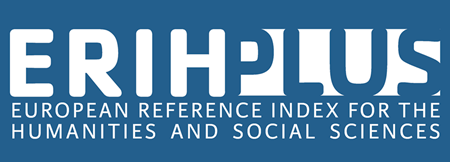PHENOMENON OF INTERTEXTUALITY IN LINGUISTIC AND TRANSLATION ASPECTS
DOI:
https://doi.org/10.32782/folium/2025.7.32Keywords:
intertextuality, intertext, text, linguistic aspect, translation aspect, typology of intertextuality.Abstract
The article aims to highlight and systematize the essence of the phenomenon of intertextuality and its typology from the perspective of linguistic theories and the translation aspect. It has been found that intertextuality as a feature of any work is defined by scientists as a text-to-text dialogue, elements, features of one text in another. It is emphasized that these features are necessarily known to the reader, are associated with texts and certain cultural and historical eras. This phenomenon can manifest itself at different levels of the structure of the work: genre, motif, position of the author, reader. It is outlined that all forms of intertextuality are signs of a certain culture, era or ideostyle of any author (usually a classic), which in the process of their use have acquired several subtexts, thereby enabling a dialogue of texts, authors and cultures. Due to this, the “foreign word” in the intertext is strengthened, contributing to the generation of new implicit meanings. By analyzing different approaches and views of scholars on the phenomenon of intertextuality, it has beens established that it consists in a new reading of the work from the point of view of intertextual connections, in particular, the identification of different forms and directions of writing (quotation, reminiscence, allusion, plagiarism, transformation, stylization in one textual plane). It is noted that manifestations of intertextuality are characteristic of any style, genre, which becomes the basis for a new conceptualization and representation of processed and newly perceived information, which is embodied in a new text. The results of the conducted research give grounds to assert that the issue of the typology of the category of intertextuality remains debatable, since there is still no single generally accepted definition of the linguistic phenomenon of intertextuality. Therefore, its classification, directions and methods for a comprehensive study of its theoretical foundations require new ideas and solutions, which determines the further scope for studying this issue in the field of modern theoretical and applied linguistics.
References
Alfaro, M.J.M. (1996). Intertextuality: Origins and Development of the Concept. Atlantis, 18(1/2), 268–285. http://www.jstor.org/stable/
Allen, W.R. (1989). Allusions to “The Great Gatsby” in John Cheever’s “The Swimmer”. Studies in Short Fiction, 26(3), 289–293.
Awung, S. (2002). Intertextuality in literature, film, and other popular media: Intermediality and signs relations. GRIN Verlag. Munich. https://www.grin.com/document/107559?srsltid=AfmBOopxzErlDptATfTXVVJh0ZI07RySjS5L1ObLVYRqQgAJ5gJFiNE1
Baker, M. (1998). In Other Words: A Course Book on Translation. London and New York: Routledge.
Barthes, R. (1977). Image, Music, Text. London: Fontana Press.
Baudrillard, J. (1993). Symbolic Exchange and Death. Thousand Oaks, CA: Sage.
Bowers, T. (2007). John Cheever’s Mock-Epic: “The Swimmer,” the “Odyssey”, and America’s Pursuit of Happiness. CEA Critic, 70(1), 17–34.
Chandrasoma, R., Thompson, C., & Pennycook, A. (2004). Beyond plagiarism: Transgessive and non-transgressive intertextuality. Journal
of Language, Identity, and Education, 3(3), 171–193.
Cheever, J. (1979). The Swimmer. In The Stories of John Cheever (pp. 403–411). New York : Alfred A. Knopf.
Culler, J. (2002). The Pursuit of Signs: semiotics, literature, deconstruction. Cornell University Press.
Eigeldinger, M. (1987). Mythologie et intertextualité. Genéve.
Fairclough, N. (1992). Discourse and social change. Cambridge : Polity Press.
Fairclough, N. (2003). Analysing Discourse: Textual Analysis for Social Research. London : Routledge.
Fedorenko, S., Voloshchuk, I., Sharanova, Y., Glinka, N., & Zhurba, K. (2021). Multimodality and Digital Narrative in Teaching a Foreign Language. Arab World English Journal (AWEJ), Special Issue on CALL, 7 , 178–189. https://dx.doi.org/10.24093/awej/call7.13
Fedorenko, S., & Sheremeta, K. (2023). U.S. University Websites as Specific Multimodal Texts. Alfred Nobel University Journal of Philology, 26(2), 9–26. https://dx.doi.org/10.32342/2523-4463- 2023-2-26/2-1
Genette, G. (1982). Palimpsestes. La littérature au second degré. Paris : Éditions du Seuil.
Giannuzzi, M. (2020). Scarlett Baron. The Birth of Intertextuality: The Riddle of Creativity. London : Routledge. https://doi.org/10.4148/2334-4415.2190
Goodrich, S. D. (1986). The reader and the text. Amsterdam & Philadelphia.
Grivel, Ch. (1978). Les universaux du texte. Littérature, 30, 25–50.
Hammer, A. (206). Lyrikinterpretation Intertextualität. Würzburg.
Hollander, J. (1981). The Figure of Echo: A Mode of Allusion in Milton and After. University of California Press. https://doi.org/10.2307/
jj.15552461
Holthuis, S. (1994). Intertextuality and meaning constitution: An approach to the comprehension of intertextual poetry. In János, P. and Terry, O. (Eds.), Approaches to poetry: Some aspects of textuality, intertextuality and intermediality (P. 77–93). Berlin : de Gruyter.
Hutcheon, L. A. (2006). Theory of Adaptation. London : Routledge.
Kitzmann, A. (2006). Hypertext handbook: the straight story. N. Y. : Peter Lang Inc., International Academic Publishers
Kristeva, J. (969). Semeiotikè, recherches pour une sémanalyse. Paris : Éditions du Seuil.
Kristeva, J. (1980). Desire in Language: A Semiotic Approach to Literature and Art. New York : Columbia University Press.
Lemke, J. L. (2004). Intertextuality and Educational Research. In Shuart-Faris de N. & D. Bloome (Eds.), Uses of Intertextuality in Classroom and Educational Research (P. 3–17). Greenwich, CT : Information Age Publishing.
Limat-Letellier, N., & Miguet-Ollagnier, M. (1998). L’intertextualité. Presses Universitaires Franche Comté.
Lynch, S.J. (1998). Shakespearean Intertextuality: Studies in Selected Sources and Plays. Westport : Greenwood Press.
Miola, R.S. (2004). Seven types of intertextuality. In M. Marrapodi (Ed.), Shakespeare, Italy, and intertextuality (P. 13–25). Manchester University Press.
Nielsen, J. (1995). Multimedia and Hypertext: The Internet and Beyond. Boston : Morgan Kaufmann.
Redmond, M.J. (2009). Shakespeare, politics, and Italy: intertextuality on the Jacobean stage. Burlington.
Riffaterre, M. (1983). Semiotique de la poesie. Paris : Éditions du Seuil.
Robbins, V.K. (1996). Exploring the texture of texts: a guide to socio-rhetorical interpretation. Harrisburg.
Rose, M.A. (1993). Parody: ancient, modern, and post modern. Cambridge University Press.
Watson, D.F. (2002). Introduction. In D. F. Watson (Ed.), The Intertexture of Apocalyptic Discourse in the New Testament (P. 1–9). Atlanta, GA: Scholars.
Worton, M ., & Still, J. (1990). Intertextuality. Theories and Practices. Manchester University Press.












